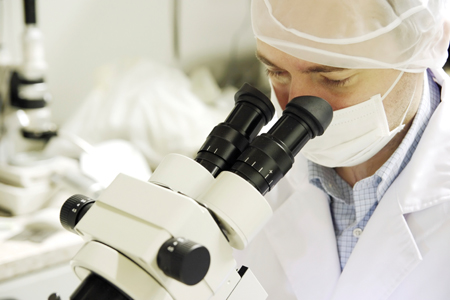The Cost of Microbial Control
Microbial contamination control remains a critical focus for the pharmaceutical industry. Microbial controls can be found throughout the manufacturing process including, but not limited to, raw materials, equipment, cleanroom environments, finished product manufacturing, and storage and shipping processes. Bioburden control programs are also essential for both sterile and nonsterile manufacturing. Many similarities exist between bioburden control and contamination control—in fact, the terms are frequently used interchangeably—however, the differences can result in ineffective or excessive control programs for sterile and nonsterile products.

Nonsterile products are allowed to possess certain types and levels of bioburden within the manufacturing process and in the final product. The challenge for a nonsterile manufacturer, therefore, is identifying how to control bioburden and achieve microbial contamination control without implementing sterile manufacturing requirements. In contrast, sterile products must be devoid of microorganisms, yet are produced in manufacturing facilities that possess a microbiome that can never be removed entirely. For a sterile manufacturer, the challenge is identifying effective controls with an appropriate level of redundancy that ultimately assure product sterility.
But why is bioburden and microbial control so critical? Failure to adequately control bioburden or microbial contamination has the potential to significantly impact patients receiving sterile or nonsterile products. Consequently, ensuring that the manufacturing environment and processes are well controlled is essential. The costs of resolving product quality problems and cGMP compliance issues arising from poor microbial control or recurring microbial contamination should eclipse concerns about operational costs.
A 2012 industry study found that the cost to fix complex failures range from approximately $100,000 to more than $2 billion for a consent decree (1). Naturally, a recall due to microbial contamination presents a financial drain for a manufacturer. Of a series of recalls from 2004 to 2011, 80% involved sterile products, and 20% of these were recalled due to “microbial contamination” (2). Moreover, the most prevalent reason for recalls of over-the-counter drugs and personal care products was contamination of nonsterile product with objectionable microorganisms (2). Robust processes that assure product quality, especially in terms of bioburden and contamination control, rather than a heavy reliance on testing (microbial enumeration, sterility, etc.) are key; otherwise, the cost to a manufacturer can run to 20–30% of total sales (3).
Recently, the U.S. FDA advised drug manufacturers that Burkholderia cepacia complex poses a contamination risk in nonsterile and water-based drug products. The Agency reminded manufacturers of the importance of developing effective microbial contamination control and root cause investigation strategies to avoid adverse events or quality problems (4). Over the past few years, numerous repeated recalls of high profile products, including sterile large volume parenterals, small volume parenterals and nonsterile dosage forms, have occurred (5). In one case, mold contamination of cleanroom HEPA filters in a large volume parenteral manufacturing facility resulted in $18.2 million in criminal and civil penalties for the manufacturer (6). Recurring microbial contamination generally results from inadequate procedures and/or ineffective root cause investigations. These two elements are among the top ten most-observed deficiencies by the U.S. FDA since 2012 (7). The situation in Europe is no different based on recent reports from the UK MHRA and European inspectors (8–10).
Bioburden and microbial contamination control is technically challenging with the potential for significant adverse patient impact and financial implications for the manufacturer. With this in mind, how can pharmaceutical microbiologists become more informed in order to ensure their microbial control processes and systems are sufficient? One way to learn the latest in contamination control is by attending the 12th PDA Annual Global Conference on Pharmaceutical Microbiology. The goal of the conference is to solve microbiological challenges and sustain success through a culture of collaboration. This year’s conference has a session dedicated to microbial control. Several case studies on effective root cause investigation and collaboration between departments and suppliers to address recurring microbial contamination will be presented in this session moderated by Edward Tidswell, PhD, Executive Director, Microbiology QA.
The pharmaceutical industry is facing pressure to continuously challenge and improve its manufacturing processes to achieve regulatory compliance and produce high quality product. New technologies to improve microbial control, support root cause investigation and provide faster response are expected to become available over the next few years. Thus, the conference will also present innovative, next-generation microbiological methods and regulatory updates to ensure companies are up to date on the best methods to ensure microbial safety for patients.
References
- Macher, J. “Business Case For Quality.” Presented at the Pharmaceutical Quality System (ICH Q10) Conference, Arlington, VA, Oct. 4-6, 2011.
- Sutton, S, and Jimenez, L. “A Review of Reported Recalls Involving Microbiological Control 2004-2011 with Emphasis on FDA Considerations of ‘Objectionable Organisms.’” American Pharmaceutical Review 15 (2012): 42–57.
- Hayes, R.J. “Cost of Quality (CoQ) – An Analysis of the Cost of Maintaining a State of Compliance.” International Pharmaceutical Industry 6 (2014): 74–76.
- “FDA advises drug manufacturers that Burkholderia cepacia complex poses a contamination risk in nonsterile, water-based drug products.” U.S. Food and Drug Administration. May 22, 2017 (Accessed July 18, 2017)
- Cundell, T. “Mold Monitoring and Control in Pharmaceutical Manufacturing Areas.” American Pharmaceutical Review 19 (2016) (Accessed July 18, 2017)
- Rubenfire, A. “Baxter to pay $18.2 million in settlement over mold at manufacturing facility.” Modern Healthcare (January 12, 2017) (Accessed July 18, 2017)
- “Inspection Observations.” U.S. Food and Drug Administration. (Accessed July 18, 2017)
- “MHRA GMP Inspection Deficiency Data Trend 2015.” UK Medicines and Healthcare products Regulatory Agency. (Accessed July 18, 2017)
- “MHRA GMP Inspection Deficiency Data Trend 2016.” UK Medicines and Healthcare products Regulatory Agency. (Accessed July 18, 2017)
- EudraGMDP Non-compliance Report observed by the European Inspectors from February 2015 to May 2017, European Medicines Agency (Accessed July 18, 2017)


